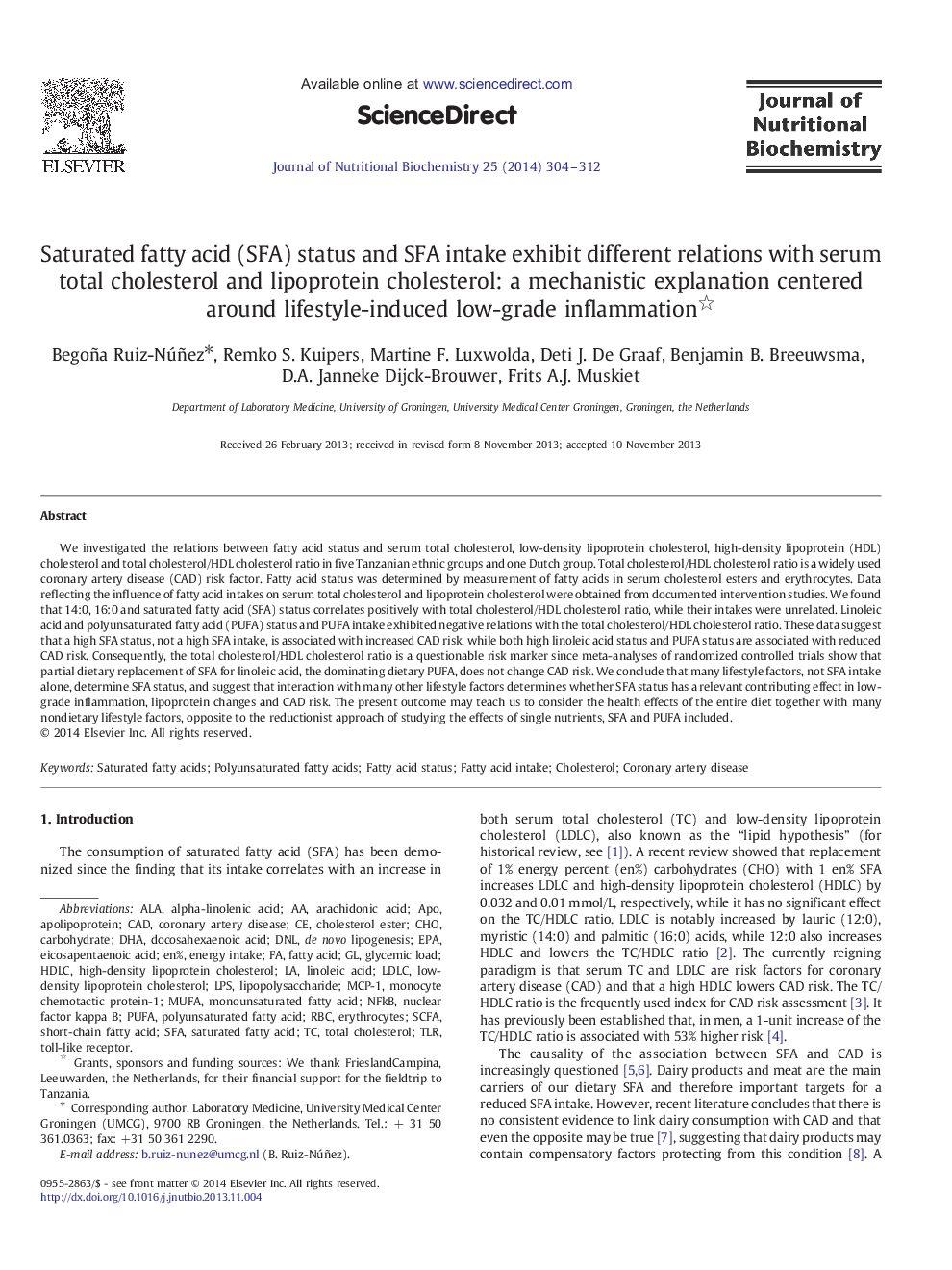| کد مقاله | کد نشریه | سال انتشار | مقاله انگلیسی | نسخه تمام متن |
|---|---|---|---|---|
| 1989744 | 1540663 | 2014 | 9 صفحه PDF | دانلود رایگان |

We investigated the relations between fatty acid status and serum total cholesterol, low-density lipoprotein cholesterol, high-density lipoprotein (HDL) cholesterol and total cholesterol/HDL cholesterol ratio in five Tanzanian ethnic groups and one Dutch group. Total cholesterol/HDL cholesterol ratio is a widely used coronary artery disease (CAD) risk factor. Fatty acid status was determined by measurement of fatty acids in serum cholesterol esters and erythrocytes. Data reflecting the influence of fatty acid intakes on serum total cholesterol and lipoprotein cholesterol were obtained from documented intervention studies. We found that 14:0, 16:0 and saturated fatty acid (SFA) status correlates positively with total cholesterol/HDL cholesterol ratio, while their intakes were unrelated. Linoleic acid and polyunsaturated fatty acid (PUFA) status and PUFA intake exhibited negative relations with the total cholesterol/HDL cholesterol ratio. These data suggest that a high SFA status, not a high SFA intake, is associated with increased CAD risk, while both high linoleic acid status and PUFA status are associated with reduced CAD risk. Consequently, the total cholesterol/HDL cholesterol ratio is a questionable risk marker since meta-analyses of randomized controlled trials show that partial dietary replacement of SFA for linoleic acid, the dominating dietary PUFA, does not change CAD risk. We conclude that many lifestyle factors, not SFA intake alone, determine SFA status, and suggest that interaction with many other lifestyle factors determines whether SFA status has a relevant contributing effect in low-grade inflammation, lipoprotein changes and CAD risk. The present outcome may teach us to consider the health effects of the entire diet together with many nondietary lifestyle factors, opposite to the reductionist approach of studying the effects of single nutrients, SFA and PUFA included.
Journal: The Journal of Nutritional Biochemistry - Volume 25, Issue 3, March 2014, Pages 304–312